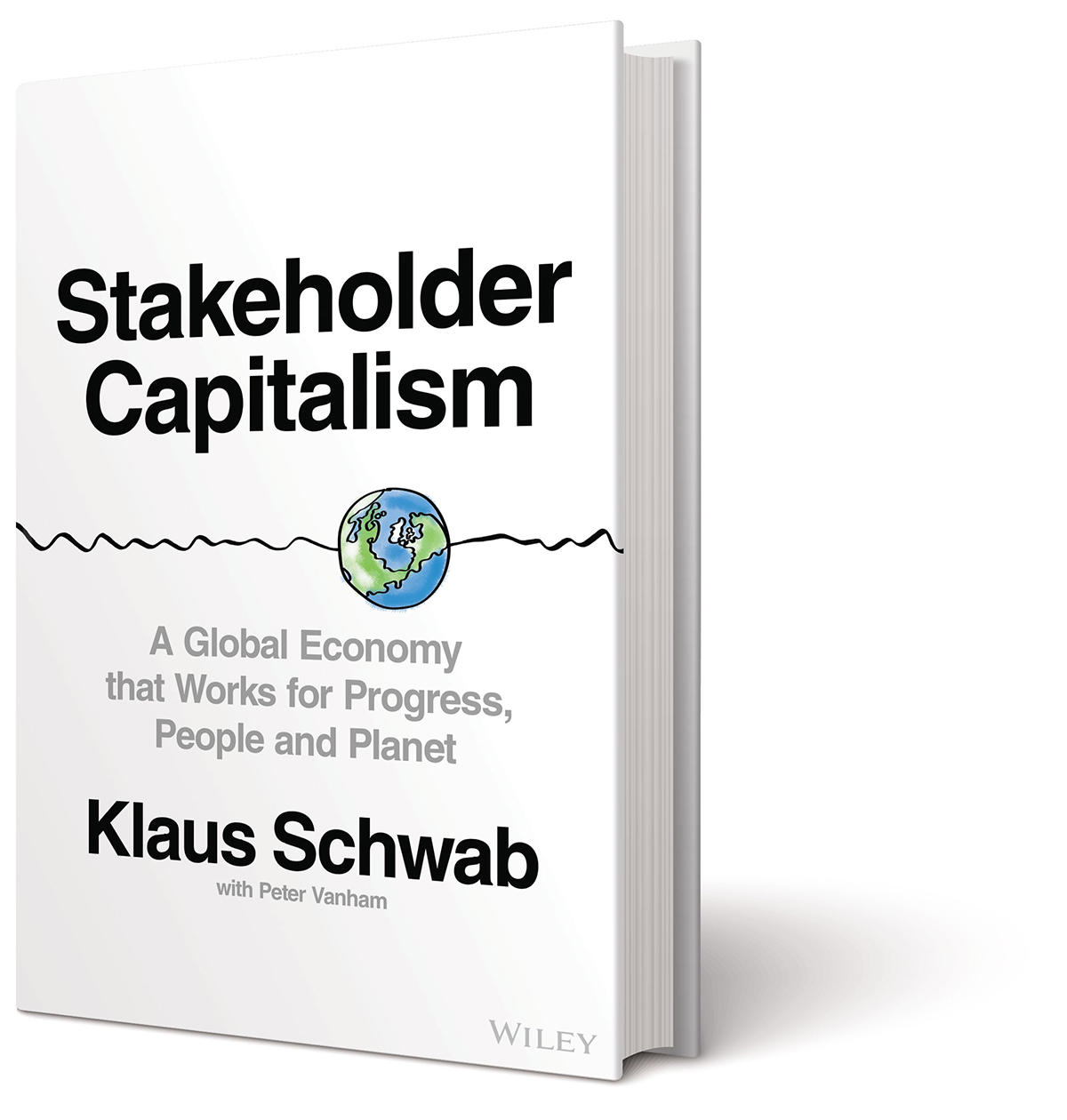Stakeholder Capitalism
A global economic movement referred to as stakeholder capitalism has an increasing number of employees, investors, and consumers demanding companies worldwide incorporate environmental, social and governance (ESG) policies into all aspects of their operations.
Stakeholder capitalism is a form of capitalism in which companies seek long-term value creation by taking into account the needs of all their stakeholders, and society at large.
Note: The following text is adapted from Stakeholder Capitalism: A Global Economy that Works for Progress, People and Planet, by Klaus Schwab with Peter Vanham and is sourced from the World Economic Forum website.
History
The stakeholder concept goes a long way back: more than 50 years. I first wrote about it in 1971, when I was a young business academic. But its roots go even further. In the 1950s and 1960s, it was quite natural for a company and its CEO to consider not just shareholders, but everyone who as a “stake” in the success of a firm.
That is the core of stakeholder capitalism: it is a form of capitalism in which companies do not only optimize short-term profits for shareholders, but seek long term value creation, by taking into account the needs of all their stakeholders, and society at large.
This approach was common in the post-war decades in the West, when it became clear that one person or entity could only do well if the whole community and economy functioned. There was a strong linkage between companies and their community. In Germany, for example, where I was born, it led to the representation of employees on the board, a tradition that continues today. And, as sourcing, production, and selling took place mostly locally or at least regionally, there was a connection with suppliers and clients as well.
This fostered a strong sense that local companies were embedded in their surroundings, and from that grew a mutual respect between companies and local institutions such as government, schools, and health organizations. It led to a constellation of stakeholders that I visualized in my 1971 book Modern Company Management in Mechanical Engineering.
In subsequent years, the stakeholder concept was adopted most prominently in the social democracies of Northern and Western Europe, including Sweden, Denmark, Finland, the Netherlands, Belgium, and Germany.
It led there, among other effects, to a tripartite system of collective labor negotiations including company management, employees, and government. And it contributed to the welfare state in which companies and employees paid their fair share of taxes to fund public education, health care, and social security.
This system did adapt as decades went by, and it lives on to various degrees in these countries.
But as a global organizing principle for business, the stakeholder concept competed head-on with Chicago University economist Milton Friedman’s notion of “shareholder primacy”. It held that “the business of business is business” (or, as he literally wrote: “the social responsibility of company is to make profits”) —and the stakeholder approach ultimately lost out.
Shareholder capitalism became the norm across the West as companies globalized, loosening their ties with local communities and national governments, and focusing instead on maximizing short-term profits for shareholders in competitive global markets.
At the same time, labor unions, governments, and other civil society stakeholders lost a lot of their power and influence, further weakening the fabric in which a stakeholder model could prosper. It meant that even in those countries that did adhere to the stakeholder concept as a governance principle, other actors got weaker, as companies, and specifically those who prospered in the Third and Fourth Industrial Revolutions, got stronger.

The Stakeholder Model Today: People and Planet at the center
Today, the stakeholder concept is ready for a comeback, albeit in an updated, more comprehensive form. We are facing a whole set of social, economic, and health crises, and the best response to these challenges, would be for all actors in society to consider more than their narrow and short-term self interest. So what could stakeholder capitalism look like today, and how does it differ from the stakeholder management in the 1960s and 1970s?
The most important characteristic of the stakeholder model today is that the stakes of our system are now more clearly global. Economies, societies, and the environment are more closely linked to each other now than 50 years ago. The model we present here is therefore fundamentally global in nature, and the two primary stakeholders are as well.
This is true first and foremost for the planet. The planet’s health, we now know, is dependent not just on individual or national decisions but on the sum of decisions made by actors from around the world. If we are to safeguard the planet for future generations, every stakeholder will therefore need to take responsibility for its part in it.
What was once seen as externalities in national economic policy making and individual corporate decision making will now need to be incorporated or internalized in the operations of every government, company, community, and individual. The planet is thus the center of the global economic system, and its health should be optimized in the decisions made by all other stakeholders.
The same interconnectedness can be observed for the people who live on the planet. The well-being of people in one society affects that of those in another, and it is incumbent on all of us as global citizens to optimize the well-being of all. Failing to do so will inevitably come back to haunt us.
COVID-19 was just one reminder of this global inter-connectedness, and the fact that no one is safe and well, until everyone is. When the SARS-CoV-2 virus spread around the planet, it devastated the livelihoods of hundreds of millions of people and led to death or severe illness for many millions. With the exception of a few island nations, no border closure was stringent enough to prevent the spread of the disease.
The extensive spread of Internet technology also makes people around the world more aware than ever of the fortunes of people elsewhere. This draws attention to global equity, making it an important objective, perhaps for the first time in history. Indeed, people are social animals, and their absolute well-being is less important than their relative well-being.
Wherever you are in the world, there is thus an increased consensus that the well-being of people—wherever they live—and the planet as a whole matter to all of us. These two elements are natural stakeholders, with people being simply all human individuals and planet being the natural environment we all share. It leads to a new stakeholder model where those two are at the center.
The Key Stakeholders and Their Objectives: Profits, Purpose, Prosperity and Peace
To ensure that both people and the planet prosper, four key stakeholders play a crucial role. They are: governments (of countries, states, and local communities); civil society (from unions to NGOs, from schools and universities to action groups); companies (constituting the private sector, whether freelancers or large multinational companies); and the international community (consisting of international organizations such as the UN as well as regional organizations such as the European Union or ASEAN).
All these stakeholders crucially consist of people and make use of the planet. It is no surprise then, that they should want to optimize the well-being of all of us as well as that of the environment. But equally, it should be clear they have specific objectives that make them distinct organisms in the first place.
• Governments focus on creating the greatest possibly prosperity for the greatest number of people
• Civil society exists to advance the interest of its constituents and to give a meaning or purpose to its members
• Companies aim to generate an economic surplus, measurable in profits in the short run, and long-term value creation in the long run
• And the overarching goal for the international community is to preserve peace
It leads to the stakeholder model as we know it today, valid anywhere in the world. When the well-being of people and planet are at the center of business, the four remaining key groups of stakeholders contribute to their betterment. As all of these groups and their goals are interconnected. One cannot succeed if the others fail.
Source: Article on World Economic Forum website by Klaus Schwab, Founder and Executive Chairman, World Economic Forum
and Peter Vanham, Head of Communications, Chairman’s Office, World Economic Forum
If you would like to learn more about the stakeholder model, we invite you to read the book, “Stakeholder Capitalism” (Wiley, January 2021).

